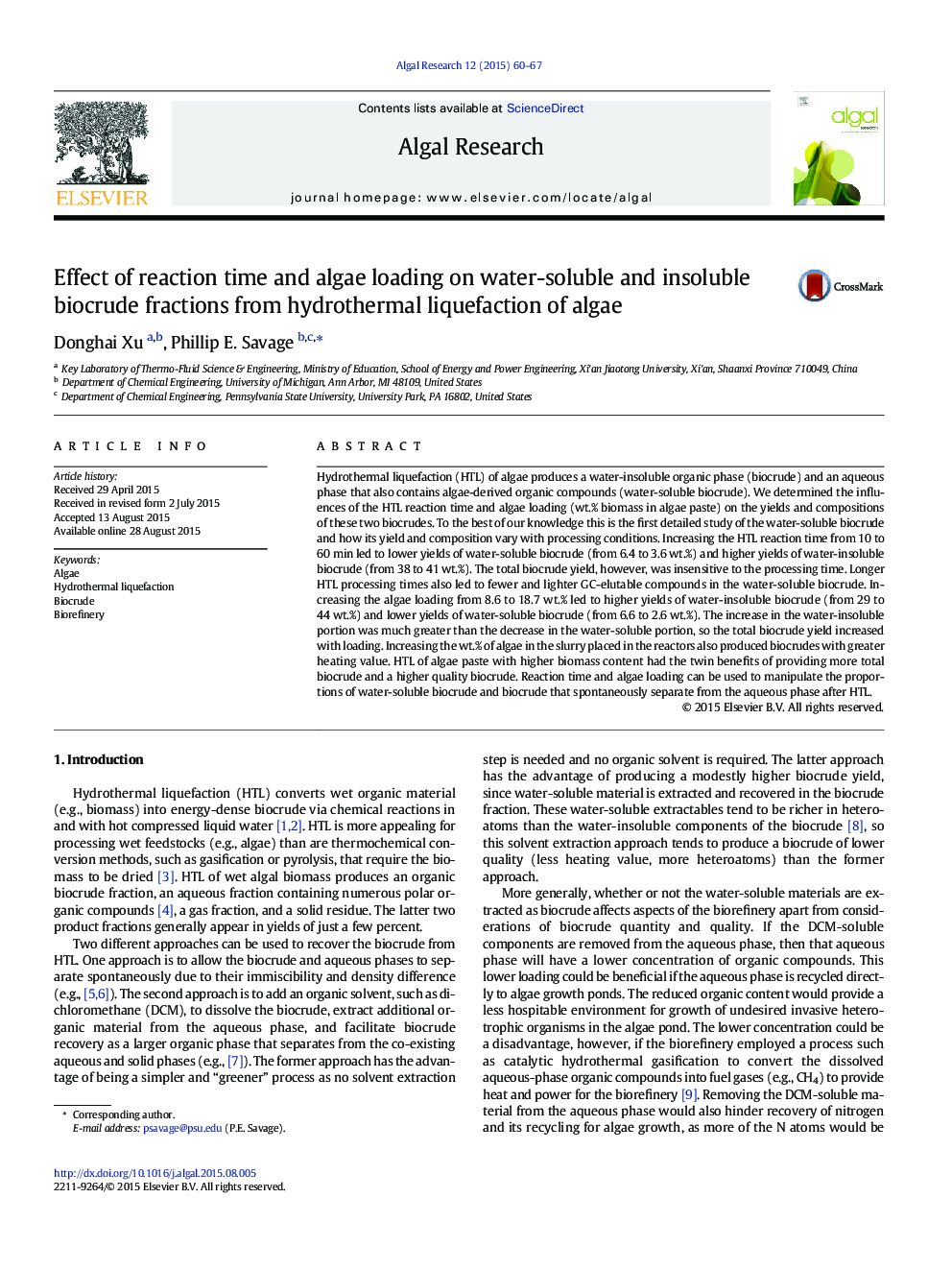| Article ID | Journal | Published Year | Pages | File Type |
|---|---|---|---|---|
| 8087878 | Algal Research | 2015 | 8 Pages |
Abstract
Hydrothermal liquefaction (HTL) of algae produces a water-insoluble organic phase (biocrude) and an aqueous phase that also contains algae-derived organic compounds (water-soluble biocrude). We determined the influences of the HTL reaction time and algae loading (wt.% biomass in algae paste) on the yields and compositions of these two biocrudes. To the best of our knowledge this is the first detailed study of the water-soluble biocrude and how its yield and composition vary with processing conditions. Increasing the HTL reaction time from 10 to 60Â min led to lower yields of water-soluble biocrude (from 6.4 to 3.6Â wt.%) and higher yields of water-insoluble biocrude (from 38 to 41Â wt.%). The total biocrude yield, however, was insensitive to the processing time. Longer HTL processing times also led to fewer and lighter GC-elutable compounds in the water-soluble biocrude. Increasing the algae loading from 8.6 to 18.7Â wt.% led to higher yields of water-insoluble biocrude (from 29 to 44Â wt.%) and lower yields of water-soluble biocrude (from 6.6 to 2.6Â wt.%). The increase in the water-insoluble portion was much greater than the decrease in the water-soluble portion, so the total biocrude yield increased with loading. Increasing the wt.% of algae in the slurry placed in the reactors also produced biocrudes with greater heating value. HTL of algae paste with higher biomass content had the twin benefits of providing more total biocrude and a higher quality biocrude. Reaction time and algae loading can be used to manipulate the proportions of water-soluble biocrude and biocrude that spontaneously separate from the aqueous phase after HTL.
Related Topics
Physical Sciences and Engineering
Energy
Renewable Energy, Sustainability and the Environment
Authors
Donghai Xu, Phillip E. Savage,
